Victoria Lower Glacier, Dry Valleys, Antarctica
Victoria Lower Glacier is a glaciologically complex feature that extends about 5 km from an ice divide with the coastal Wilson Piedmont Glacier, forming a tongue about 3 km wide. It is a cold-based glacier tongue, mainly supplied by ice from the alpine Schultz Glacier to the north and a local area of firn (névé); these two areas combine to form a broad shear zone. The ice margin is unusual and differs from other glaciers in the Dry Valleys. The northern part of the glacier terminates as a cliff, while the eastern and southeastern part is a gentle ramp that merges with the sandy proglacial plain. The glacier, from these features, is undergoing a slow recession. The glacier was named by Drs Barrie McKelvey and Peter Webb after the Victoria University of Wellington in New Zealand, following the 1958–59 expedition from that university.
|
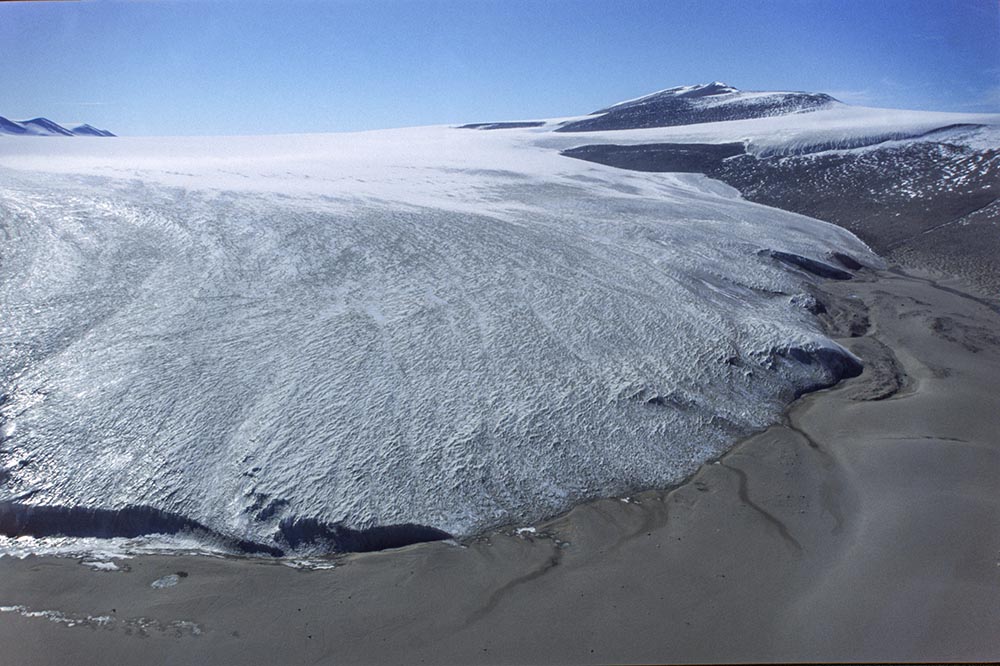
Aerial view of the snout of Victoria Lower Glacier, showing both a cliff-edged margin to the left and a gentle ramp to the right. The rough surface is quite dusty from the sand that blows off the plain in the foreground. Traces of runoff are visible in the sand.
| 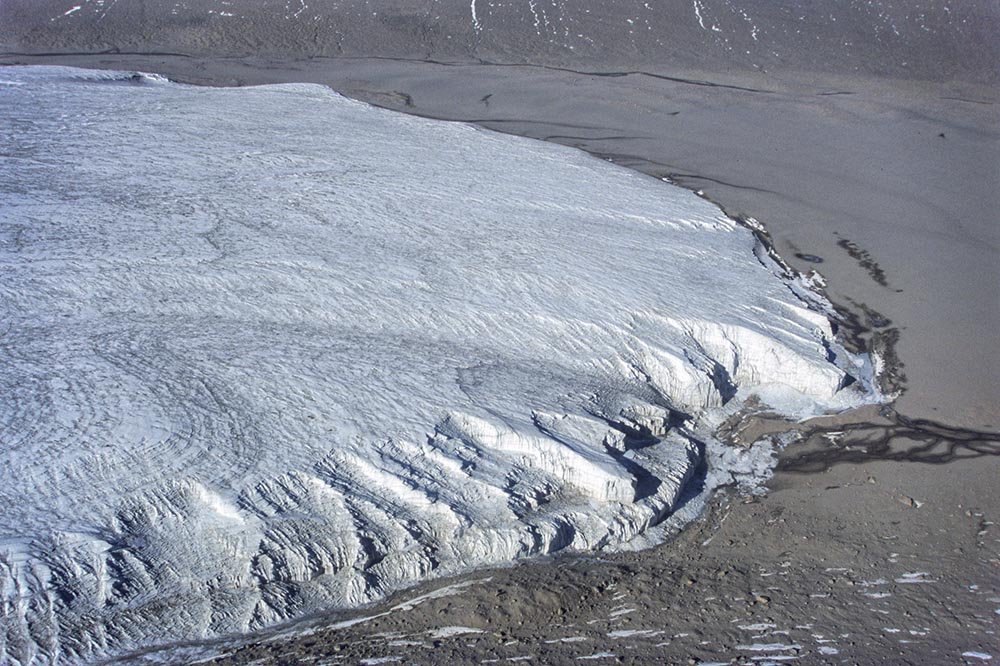
Aerial view of some of the structural features in the snout area of Victoria Lower Glacier. The wavy light and dark bands on the surface are the original sedimentary stratification from snow accumulation. The faint longitudinal streaks represent flow-parallel foliation. The terraced ice cliffs are the result of differential ablation according to the thickness of sand blown onto the ice surface.
| 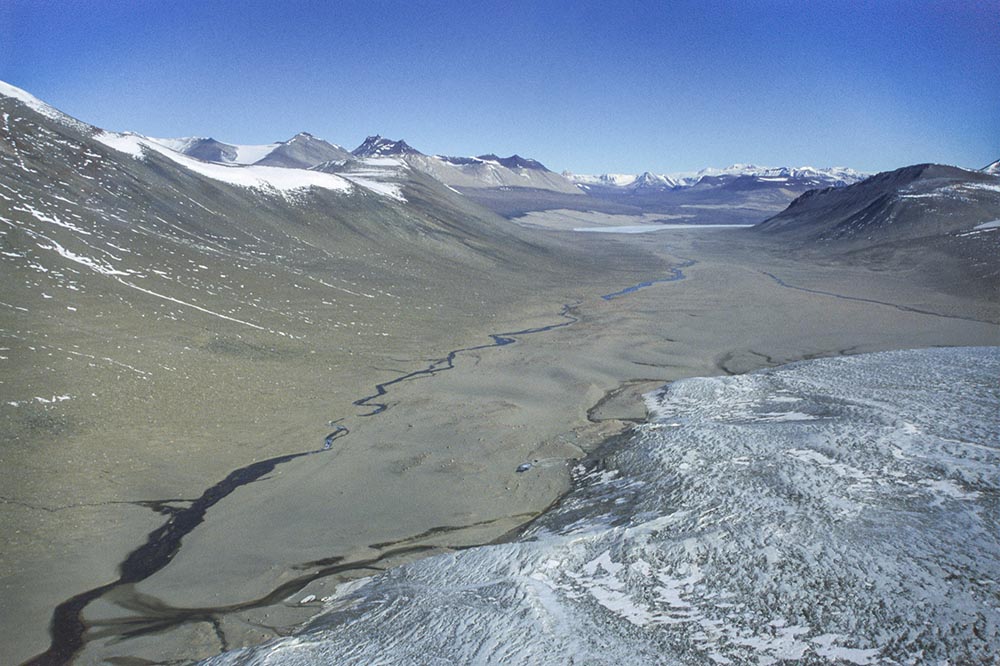
Context of Victoria Lower Glacier within the Victoria Valley, with the Olympus Mountains on the left. Wind-blown sand is a dominant feature of this valley. Meltwater run-off from the southeast margin produces a small river that flows into Lake Vida in the background.
| 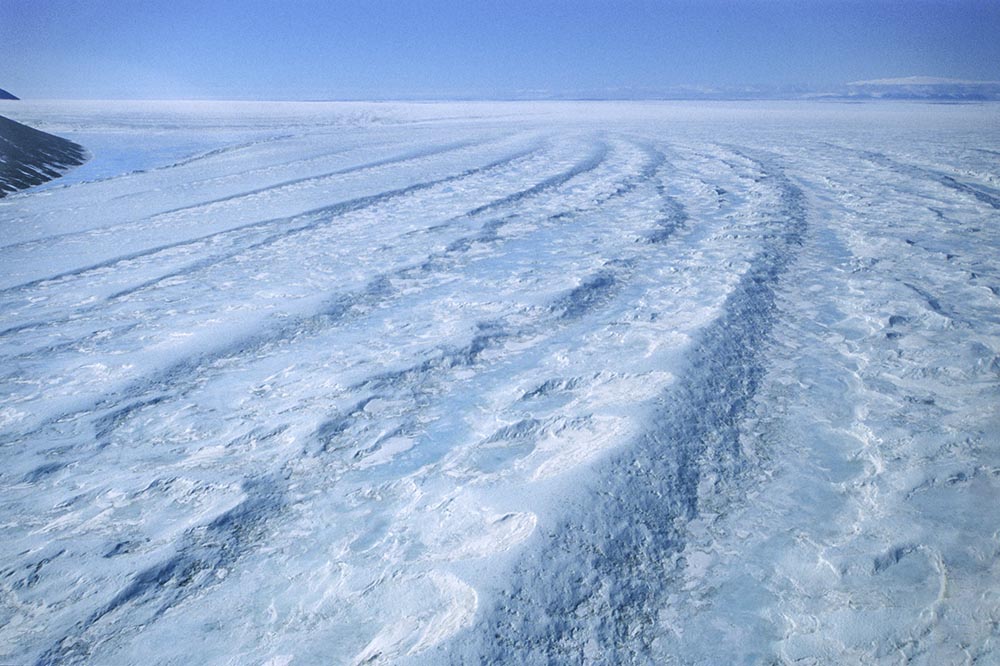
Looking up Victoria Lower Glacier to the ice divide with Wilson Piedmont Glacier. Schultz Glacier is the body of ice flowing from the left. It swings round and produces the longitudinal flow structures of ridge crests and ice valleys, the latter containing ponds of frozen meltwater. The northern end of Ross Island is faintly visible in the right background.
|
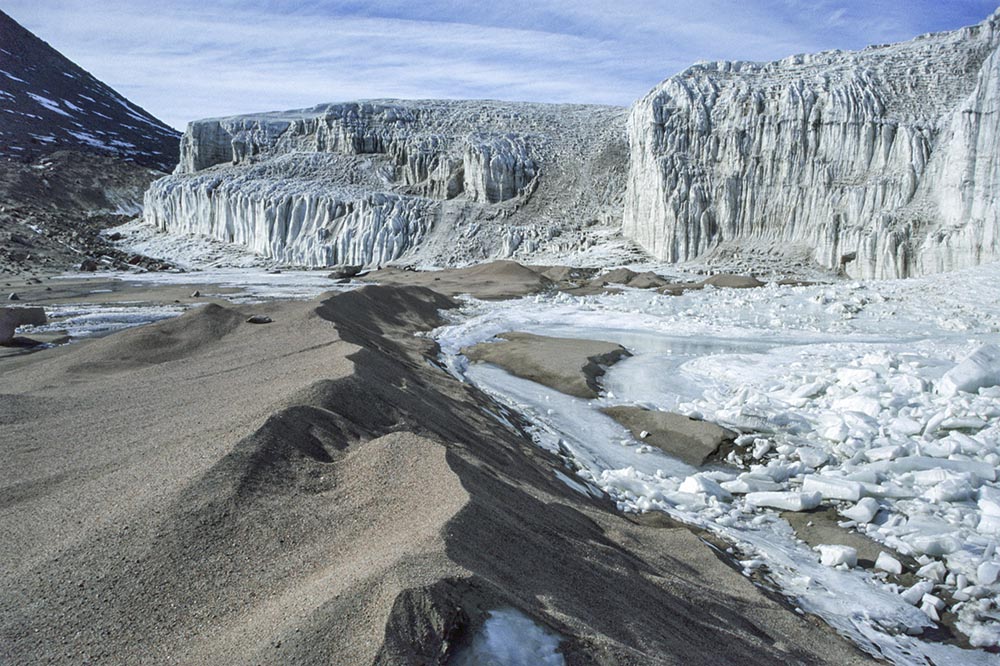
Ice-pushed ridge of wind-blown sand. The irregular shadowed face is a former ice-contact surface and is underlain by dead glacier ice. In conditions of melt, water drains along the front of the Victoria Lower Glacier, forming a shallow canyon into which ice blocks fall as the stream undercuts the ice cliffs.
| 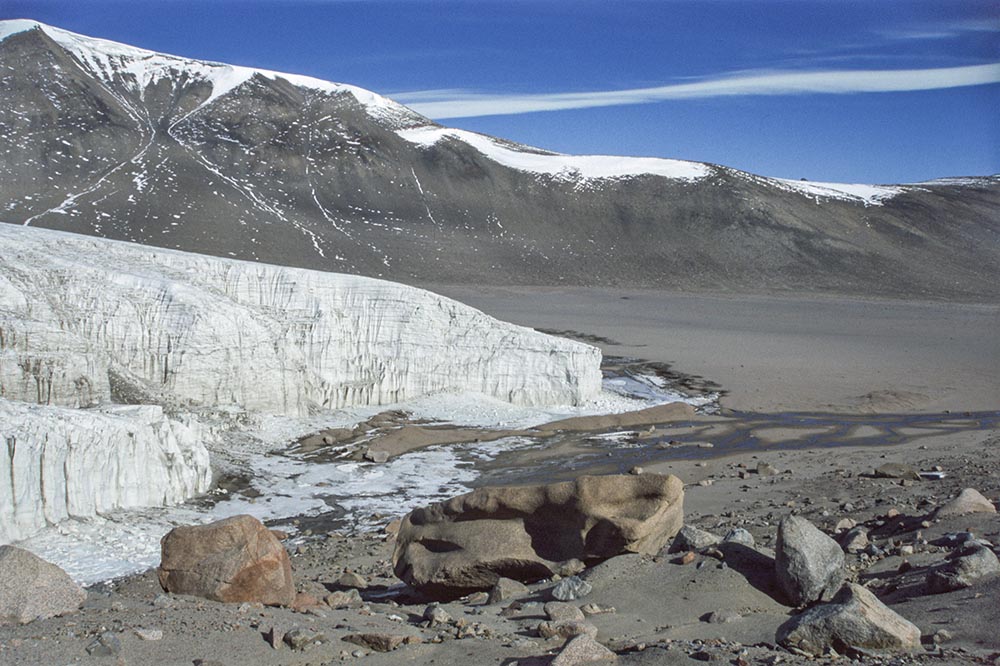
The true-right (northern) margin of Victoria Lower Glacier from an old moraine ridge. The ridge consists of sandy boulder gravel, on top of which boulders have been heavily scoured by wind.
| 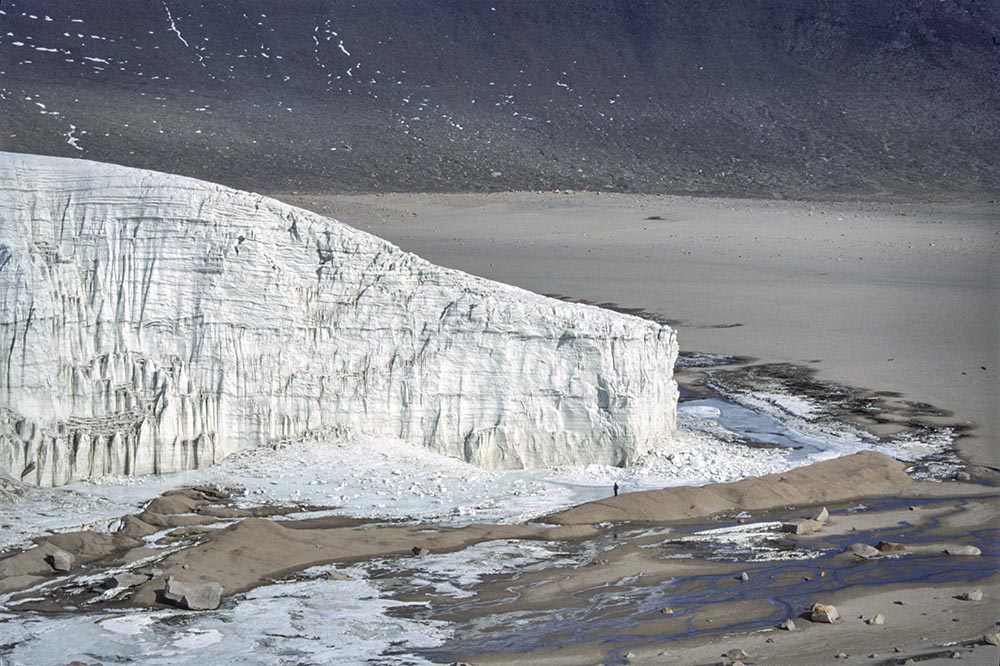
The scale of the terminal ice cliff of Victoria Lower Glacier is illustrated by the glaciologist on the former ice-contact ridge. Cones of fallen glacier ice occur at the foot of the cliff. The sand-draped foreground is littered with glacier-transported boulders, across which small melt-streams flow onto the flat sandy plain below.
| 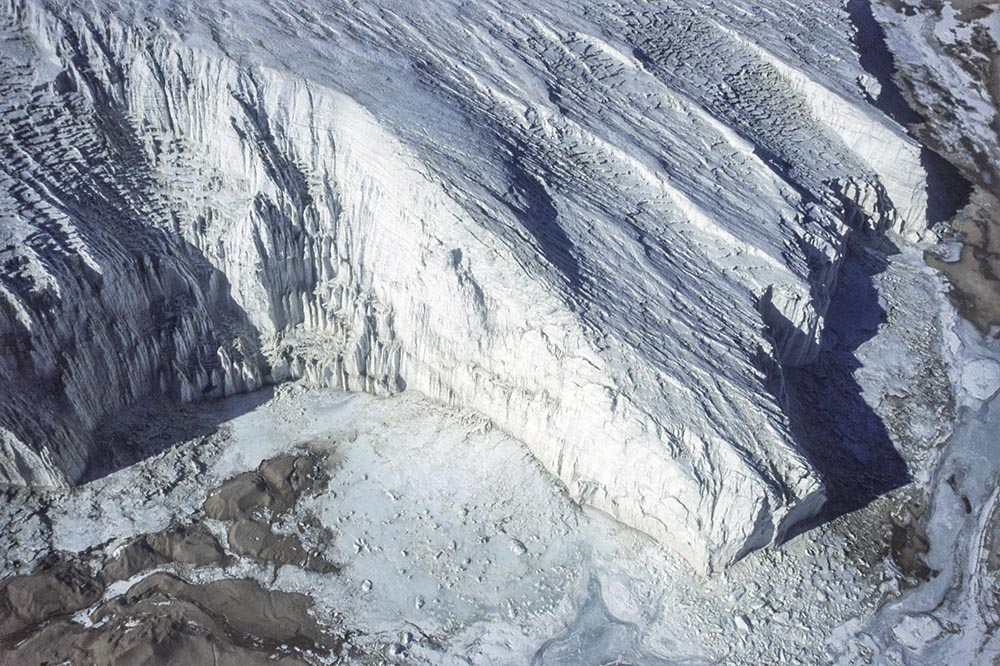
Aerial view of the snout of Wright Lower Glacier, showing section with vertical cliff, a furrowed ice surface from differential weathering and a frozen pond, littered with ice blocks fallen from the cliff face.
|